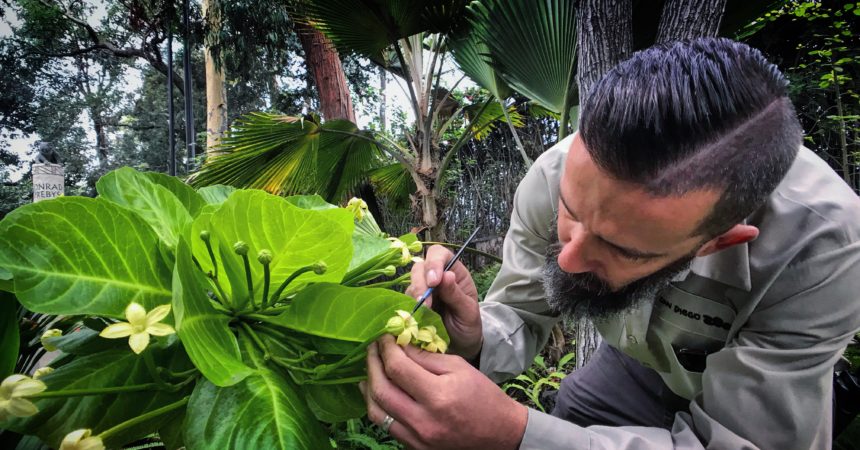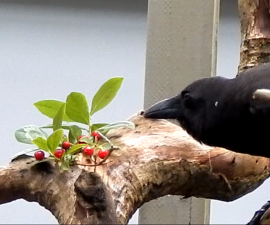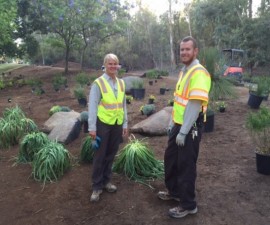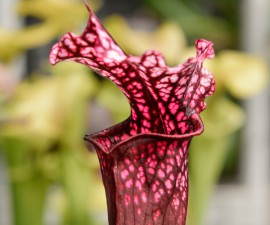Most people know San Diego Zoo Global is working to end extinction, and might even be able to name a number of key species we’re helping. Yet some of the most interesting stories are yet to be heard—this is one of them.
Brighamia insignis is a fascinating plant that is endemic to the island of Kauai and historically to Niihau. This plant has an otherworldly look and a story to match. Brighamia insignis has the common name cabbage-on-a-stick or, in Hawaiian, alula. It is believed this species is now extinct in its natural habitat. Overgrazing by feral goats and pigs was a serious problem for Brighamia, as was competition from invasive non-native vegetation. To make matters worse, the plant’s sole pollinator, a particular species of long-tongued sphinx moth (commonly know as a hawk moth), has become extinct. However, the alula still grows and blooms—in gardens and botanical collections around the world.
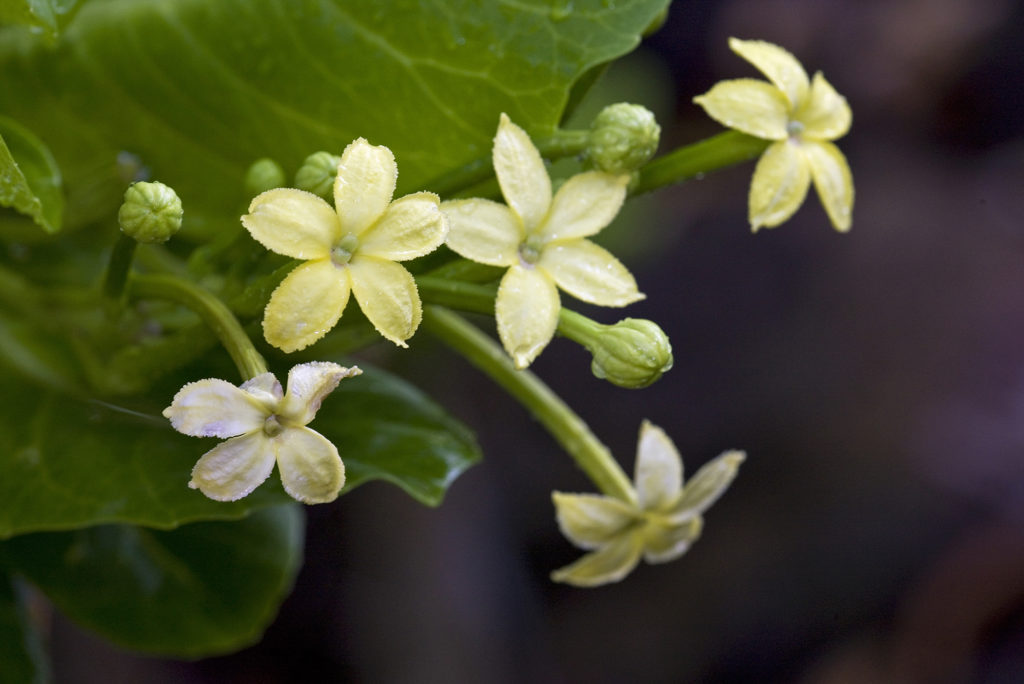
This plant was saved from total extinction by botanists who at times rappelled down steep cliffs to pollinate, by hand, the few remaining wild plants. These few survivors found sanctuary in an extreme spot that feral animals and invasive plants couldn’t reach them. Unfortunately, when their sole pollinator became extinct, the survival of the B. insignis species became a cliffhanger tale.
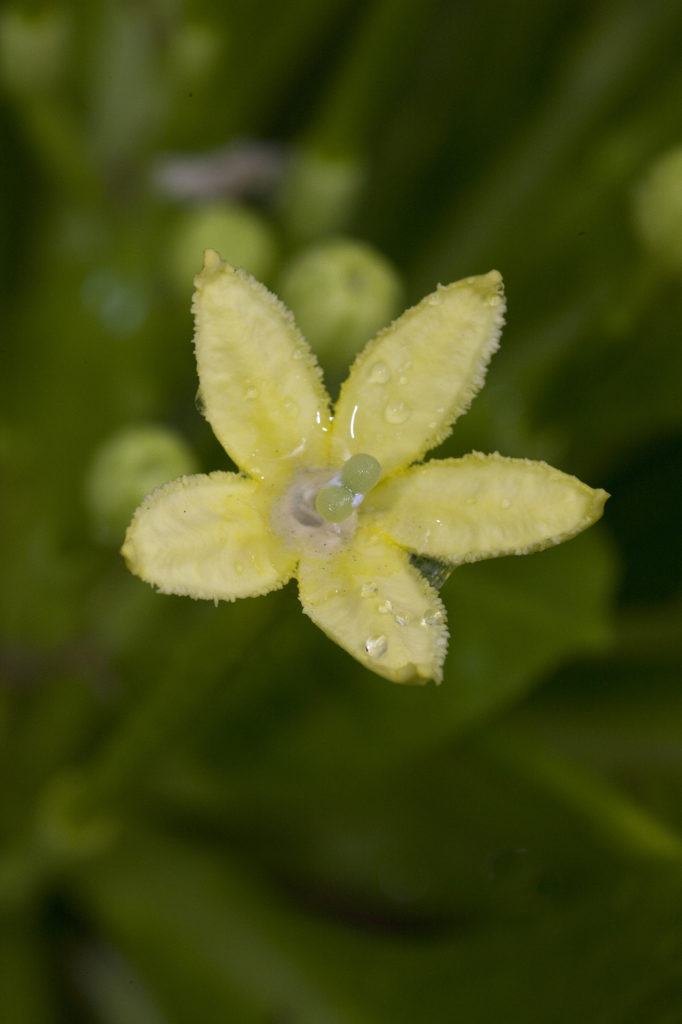
In the late 1970s, researchers from the National Tropical Botanical Garden collected seeds and distributed them to various botanical gardens around the world. The San Diego Zoo also received seeds of the species from several sources in the late 1990s and early 2000s. Our horticulture staff was able to grow many seedlings from a mother plant we had in our collection.
Through genetic research, we discovered that our B. insignis had genetic material that differed from those at other botanical gardens. For the benefit of this rare plant, we sent pollen to the Chicago Botanic Garden to pollinate their plants to help increase the genetic diversity in the species. Further genetic studies are underway, and we are contributing to these studies by sending leaf samples from our collections to researchers.
Ex-situ conservation is the practice of protecting a plant or animal outside of its native habitat. Sometimes this is the only option in situations where habitat destruction, poaching, or loss of a pollinator makes on site conservation either impractical or, as in this case, impossible. Today, thanks to botanical gardens around the world like San Diego Zoo using ex-situ conservation techniques, this amazing plant has been saved.
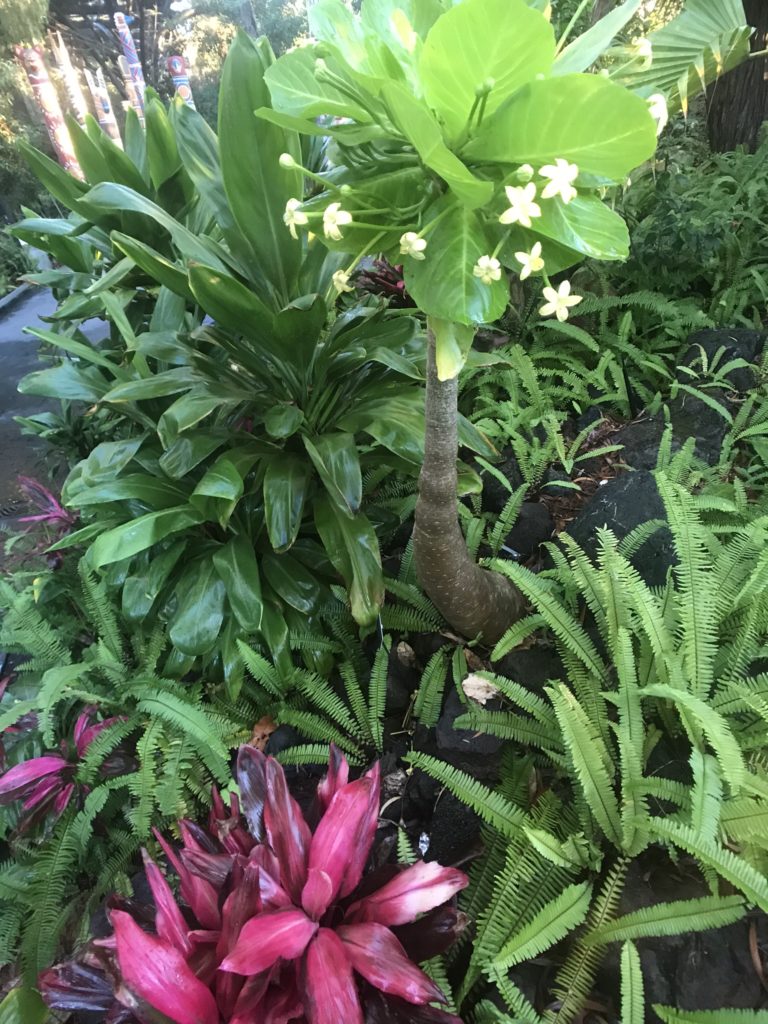
Make sure the next time you visit San Diego Zoo to stop and see our our Brighamia insignis collection and enjoy a sight that almost vanished forever. You’ll find these plants in our Hawaiian Native Plant Garden along Front Street, just before Australian Outback.
Pat Smith is a senior horticulturist at the San Diego Zoo.

